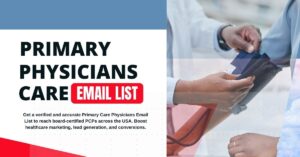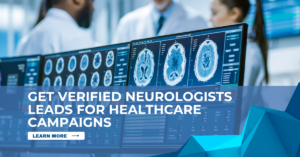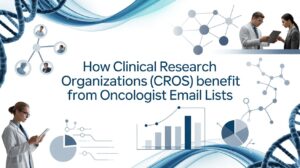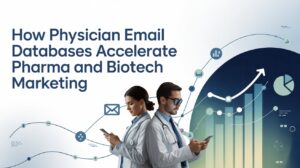The future of assistive technology in the healthcare industry is no longer just a futuristic concept—it’s unfolding right now. From AI-enabled devices to smart interfaces, digital tools are enhancing how care teams, organizations, and support services operate. For B2B firms in the healthcare ecosystem, these innovations open doors to new partnerships, data models, and automation opportunities.
As the demand for more efficient, inclusive, and tech-driven services grows, assistive technologies are playing a major role in redefining workflows, communication, and service delivery. This transformation is not just about accessibility—it’s about performance, personalization, and precision.
Why Assistive Technology Is Gaining Momentum in Healthcare
The move toward digital accessibility reflects a larger shift happening across the healthcare landscape. Legacy systems are being replaced with intelligent tools that support better collaboration and reduce human effort.
Here’s what’s fueling the momentum:
- Increased aging population and care demand
- Digital transformation of care coordination
- Policy-driven mandates for accessible technologies
- Advancements in AI, IoT, and wearable tech
These factors make assistive technology a strategic area of investment for B2B organizations looking to streamline service delivery and boost operational efficiency.
Key Use Cases: Assistive Technology Beyond Mobility Aids
Modern assistive technology extends far beyond traditional devices. It includes a wide range of smart tools and automated systems designed to assist support staff, optimize administrative tasks, and improve data accuracy. Below are emerging categories making an impact:
- Voice-Activated Systems
Voice-enabled platforms allow hands-free navigation across records, documentation, or workflow dashboards. These are particularly effective in fast-paced environments like urgent care settings, rehab centers, and long-term facilities.
- Wearable and Sensory Devices
Smartwatches, biometric trackers, and adaptive wearables now integrate with enterprise systems to relay real-time feedback—improving proactive decision-making for service teams.
- AI-Powered Communication Tools
AI-driven speech-to-text applications, language converters, and smart assistants reduce delays and enhance clarity, especially in multilingual and remote service environments.
- Screen Readers and Adaptive Interfaces
These tools empower visually or motor-impaired professionals to engage with complex digital environments, enabling broader workforce inclusion and productivity.
How Assistive Tech Supports B2B Healthcare Goals
For B2B solution providers, assistive technology offers advantages that extend well past end-user support. It also brings strategic value in:
- Workforce efficiency: Reduce task repetition and enable faster data entry and access.
- Compliance readiness: Align with accessibility standards like ADA or WCAG for software and device integration.
- Market differentiation: Position your services as inclusive, adaptive, and tech-forward.
- Data enrichment: Collect more granular user interaction data to refine service delivery or personalize offerings.
Businesses serving the healthcare ecosystem—like equipment suppliers, software providers, consulting firms, or data marketers—can leverage assistive technology to solve operational bottlenecks and enhance their value chain.
Emerging Trends Shaping the Future of Assistive Tech
Let’s explore where the space is headed and how B2B firms can align their strategies accordingly.
Integration with Predictive Analytics
The convergence of assistive tools with AI and predictive modeling helps forecast usage needs, user behavior, and access patterns. This allows organizations to plan resource allocation more effectively.
Cloud-Based Ecosystems
Cloud platforms are enabling centralized access to assistive tools across departments and locations, facilitating collaboration and data-sharing while minimizing infrastructure costs.
Interoperability Standards
The rise of interoperability protocols ensures assistive devices can plug into existing systems, from electronic records to enterprise CRMs. This makes implementation smoother and less time-consuming.
Inclusive Design Thinking
Design strategies now prioritize adaptive interfaces that cater to diverse user needs—resulting in tools that are flexible, intuitive, and customizable from the start.
What This Means for Healthcare Database Marketing Firms
B2B marketers in healthcare have a unique opportunity to contribute to this evolution. By incorporating assistive tech trends into product positioning, segmentation, and content strategy, firms can better engage with:
- Assistive device manufacturers
- Healthcare accessibility consultants
- Smart device distributors
- Telehealth and software integration partners
It’s also a great opportunity to refine data models by segmenting audiences based on accessibility readiness, tech adoption behavior, or infrastructure compatibility. For platforms like Medstream Data, this enables more personalized outreach, higher conversion rates, and stronger long-term relationships.
Challenges to Navigate
Despite the potential, a few hurdles remain:
- High implementation costs for smaller service providers.
- Limited interoperability across outdated systems.
- Training and onboarding gaps for end-users and staff.
- Data privacy concerns in shared device environments.
B2B organizations that address these proactively—through partner education, bundled service models, or robust onboarding workflows—will be better positioned to lead in this space.
The Road Ahead: Innovation and Inclusion Go Hand in Hand
The future of assistive technology in the healthcare industry isn’t just about digital tools—it’s about building ecosystems where inclusivity meets intelligence. From cloud-enabled interfaces to AI-integrated workflows, assistive solutions will continue to redefine how services are delivered and consumed.
For businesses looking to stay ahead, now is the time to act. Whether you’re in data solutions, tech integration, or healthcare consulting, aligning with assistive tech trends will not only drive relevance but also open new pathways for growth and innovation.
Visit our website Med Stream Data for more healthcare industry related information!







